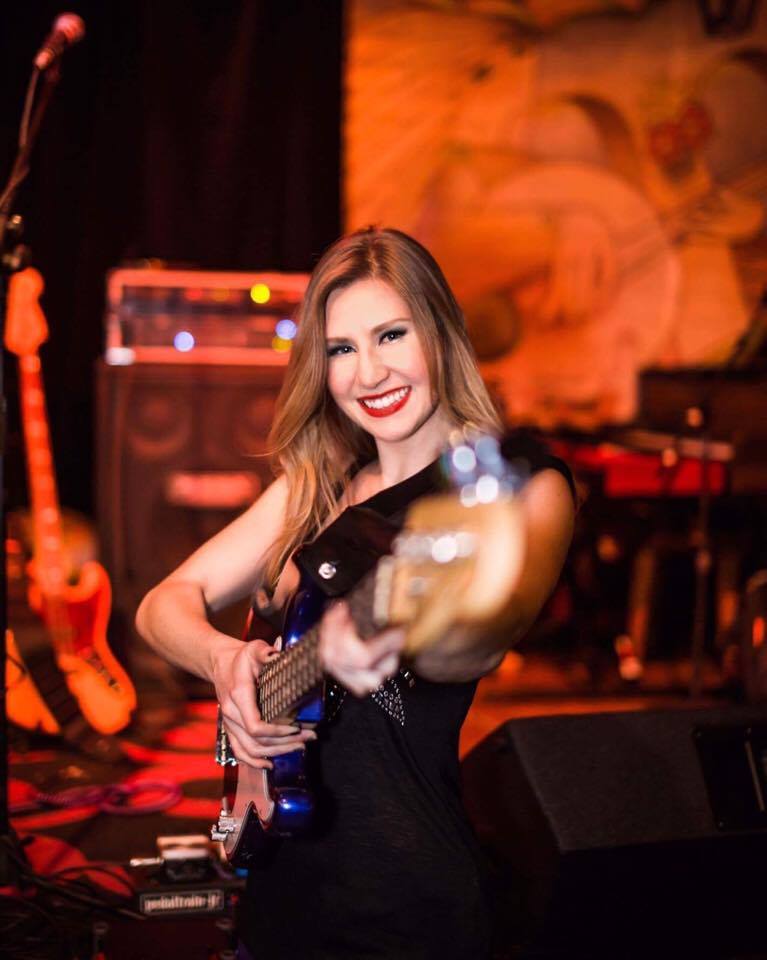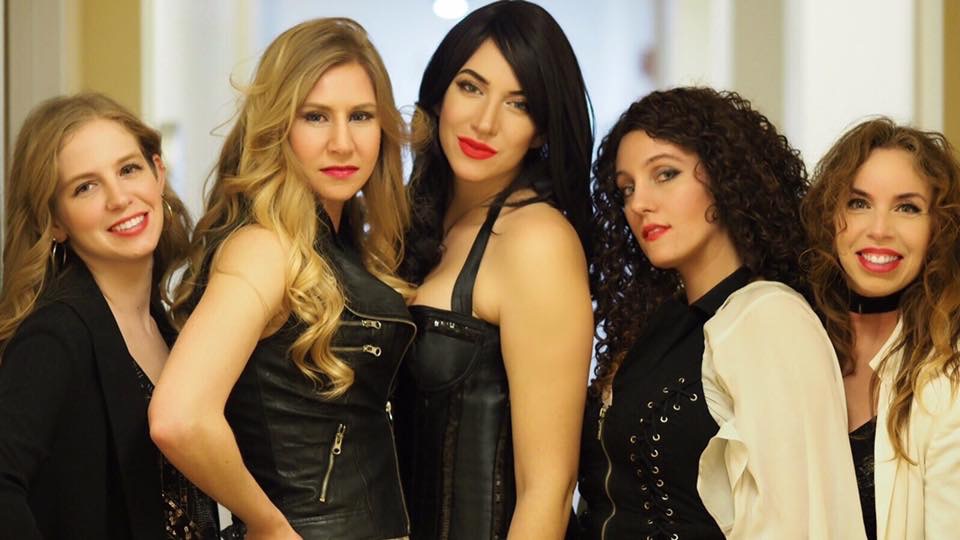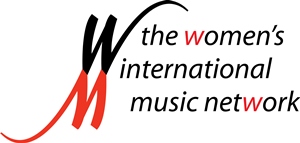By Carl J Mancuso
Carl J. Mancuso is a graduate of Louisiana State University (Journalism) and the University of Central Florida. He has published music articles on Blogcritics.org featuring Cheap Trick, Foreigner, Girl in a Coma, The Dollyrots, and others. He is a strong advocate for promoting Women in Music via Upswing PR and his concert series, “Ladies Rise Up and Rock,” which has donated funds for music education in Northern California and Oregon through The Grammy Organization and Rock Camp for Girls. He resides in Birmingham, Alabama.
 A self-described geek about all things related to bass, Diana and I hit it off immediately. Within minutes, her voice conveyed her vast knowledge of bass techniques, songs, and gear. At the same time, seeing her perform on stage revealed a perpetual smile and joyful happiness, splendid musicianship, and a love for her band mates in The Killer Queens, the world’s only all-female Queen tribute band. Founded in 2011 by lead vocalist Nina Noir and guitarist Joyce Kuo, the current lineup of the band features Noir on lead vocals; Diana on bass/vocals; Nichole Boaz, keyboards/vocals; Lindy Day, guitars/vocals; and Karla Downey, drums, percussion, and vocals.
A self-described geek about all things related to bass, Diana and I hit it off immediately. Within minutes, her voice conveyed her vast knowledge of bass techniques, songs, and gear. At the same time, seeing her perform on stage revealed a perpetual smile and joyful happiness, splendid musicianship, and a love for her band mates in The Killer Queens, the world’s only all-female Queen tribute band. Founded in 2011 by lead vocalist Nina Noir and guitarist Joyce Kuo, the current lineup of the band features Noir on lead vocals; Diana on bass/vocals; Nichole Boaz, keyboards/vocals; Lindy Day, guitars/vocals; and Karla Downey, drums, percussion, and vocals.
Visit The Killer Queens website here.
CJM: A lot of folks probably don’t realize that you are also a very talented keyboardist. Given that you started out on piano first, how long have you been playing bass and what beckoned you to embrace it so much?
DR: I’ll start out with the story my mom tells everyone about when she realized she had a little musician on her hands. When I was four, she put on a Sesame Street album and went into the next room. A bit later, she returned to find me on the piano, jamming along in key as if I was part of the band on the recording. One of my favorite things to do at that age was to sing, play the piano, and put on silly shows for my family where I forced everyone and anyone to sit down and watch me be a ham. I did costume changes, choreography, the works! In response to all this, my parents started me in piano lessons when I turned 5, so I continued to train classically until the age of 12. I’m kicking myself for quitting piano then, of course. At that time, I began playing flute for a year and switched to clarinet the following year, performing in my middle school’s band. A few years later, I discovered my spirit animal, the bass guitar. It’s a bit odd that I read music and tabs but I definitely prefer to learn music by ear. For me, playing by ear is nearly instantaneous and definitely instinctual, whereas sheet music takes me some time to absorb and translate back onto the instrument.
CJM: How and where did you learn how to play bass?
DR: Three places. In my room with the radio on, I’d figure out the chord progression and jam along with any song that aired. For 7 years, I played bass every week in my church band during mass. In my friend Liz’s garage for something like 10 years with a band that consisted of me, Liz, her brother, and her cousin. I took a lesson one time and found it to be a waste of time, but I know now he was just the wrong teacher for me. Technically I’m self-taught, but really my teachers were a regular practice routine, the experience of being in a garage band, and the bassists who played on the recordings I studied. I read Daniel Coyle’s The Talent Code about how it takes time, passion, and lots of focused rehearsal hours to master a skill. I definitely put in my time jamming and performing in front of people.
CJM: Who are some of the musicians who have inspired you and have had the greatest impact on your approach to bass?
DR: John Deacon, Flea, Nik West, Tony Kanal of No Doubt, Geddy Lee, Paul McCartney, Cliff Burton, Jaco Pastorius, Lee Rocker, Esperanza Spalding, Victor Wooten, and Tal Wilkenfeld. This isn’t in any particular order, just random as they came to my head. Don’t ask me to rank these players! When you’re talking about the greatest of the great players, they’re so unique and talented that it’s hard to compare skill level. I think at the top levels, it’s more a matter of musical taste. But what sets these guys apart from the rest, is how unique and groundbreaking their playing and performing style is. My favorite female bassists include: Nik West, Catherine Popper, Esperanza Spalding, Tal Wilkenfeld, Angeline Saris, Ariane Cap, and Anna Sentina.
CJM: What specific challenges do you face as a female bassist and what are some advantages?
DR: Challenges – The music industry has historically been very male dominated, and so I long to see more women filling roles both onstage and behind the scenes. There’s more of that going on now than before, so that’s really exciting. I have two kids and I can see first hand why women may take time out of pursuing a music career to take care of the home front. Other female musicians can be really challenging. We can be each other’s best supporters and each other’s worst critics. I’ve worked with both kinds and some that are in between. It’s pretty deflating to feel like one of my musical sisters is trying to bring me or anyone else down, because that is so not what I’m about. I want to see other women killing it onstage and support them. In the past year and a half especially, I’ve learned to grow a thick skin and be careful who I take criticism from.
Advantages – It’s rad to surprise people when I get on a stage and they see I’m the bass player and singer, instead of just the lead singer. The stereotypes are changing as more and more women are playing instruments in addition to singing. Another advantage to being a she-bassist is connecting to other women in the audience. I look out into the crowd and I see the ladies looking at me and loving that I play a guitar and play it well. I can tell they feel empowered by it because they come up right in front of my spot on the stage and rock out with me, giving me lots of love. I also hope that I’m showing other chicks (including little girls at my all ages shows) how to rock like a girl. When young girls come up to me after a show to chat, I always ask if they play any instruments and if the answer is no, I encourage them to pick up an instrument and play!

CJM: What tips/advice would you give to aspiring bassists on how to navigate through the music business and promote harmony in a band?
DR: I am a huge believer in the team mentality. In a harmonious group, each member feels like they add value and bring their skills, experience, and wisdom to the table. I’ve seen time and time again that bands succeed when they work together as equals for a shared goal. Bands fall apart when any one or all members act as individuals only looking out for themselves, and acting like they alone are the reason for a band’s success. If we uplift and appreciate each other, we can fly higher. Together, we either fall or fly high. Sounds hokey, but this is the truth.
Balance is the other crucial element. My love for music and my love for family and friends are the two most important parts of me. Don’t ask me to choose between them. I draw inspiration for my music from my personal life, and the music helps me blow off steam and process what’s going on offstage. If it weren’t for my family, I’d be a workaholic musician and I wouldn’t have a life outside of that. I’ve seen so many times how important it is to have something going on in your life outside of your music because it can be easy to get completely consumed with the passion and drama of life in a band. My family helps me let go, focus on other things, and not take everything that happens in my bands and music career so seriously.
CJM: As a musician, is there anything you have learned in the last year that you wish you had known when you first started playing bass?
DR: I definitely had a tough lesson to learn this past year about believing in myself and recognizing that I have to carefully evaluate what a person’s motivation is in giving an artist negative feedback. So often when people criticize you, it has nothing to do you with you and everything to do with them being uncomfortable with themselves. Since they won’t accept and then work on their inner demons, they lash outward in the hopes that it will distance them from their fears and insecurities. This lesson applies to all aspects of life, not just music. So if I could hop into a time machine, I’d tell my 16 year old self that I have every right to believe in myself and ignore the critics. If I’d known back then where I’d be today, I would have chosen a different path during my college years and gone to Berklee to study, perform, and write music.
CJM: Did you start out on upright bass in high school? Can you explain why Brian May joked about using an upright bass on the song? Explain what you like most about playing the upright bass on stage?
DR: Upright bass on stage adds so much to the look of the band. It’s like having another band member up there! The Cremona is bigger than me for sure. I like to do upright bass tricks because it also adds a fun visual effect to a show. During “Crazy Little Thing Called Love,” I lean the upright bass over a bit and kneel down to brace it with my knee so that Nina Noir (our Frederica Mercury) sits on the side of the bass while singing to the crowd. It’s always fun to show off like that. Definitely a photo op moment, and the bass trick is fitting for this song because it’s Queen’s rockabilly song. I started playing upright bass back in 2012 because I joined an all-girl rockabilly band, so it’s fun to throw that vibe into our set for a song. I had always wanted to play upright, but finally when I joined the rockabilly group (Pedals & Pistols), I had an excuse to buy one and perform with it. Queen was very showy and theatrical, so I think they’d approve of the upright bass making an appearance and giving me and Noir the opportunity to do some upright bass tricks on stage.

CJM: The Killer Queens have been really busy in the last three years, playing at NAMM, at Giants Stadium prior to a major league baseball game for the San Francisco Giants, and playing in various venues in Northern California and Nevada. Nina mentioned that you were also invited to play in Detroit for a Queen convention. What is on tap in the immediate future for The Killer Queens as far as touring is concerned?
DR: We’re hoping to play for more audiences and venues in the US and eventually around the world. Currently we’ve been playing more in the wine country area of Northern California, but we also hope to play soon in the northern west coast. We’ll keep you updated on our website The Killer Queens, as well as our Facebook page, Instagram, and Twitter accounts.
CJM: Not long ago you told me that you were working on a solo album. How far along are you in the process of getting that material recorded and released? More importantly, how would you describe the texture and feel of the songs you have written for the project?
DR: This is definitely a work in progress! Right now I’m listening to and inspired by tons and tons of Queen, Sara Bareilles, Grace Potter and the Nocturnals, Alabama Shakes, No Doubt, Imelda May, Miranda Lambert, Amanda Palmer, The Beatles, Etta James, Meghan Trainor, Adele, Amy Winehouse, Florence + The Machine, Muse, and The Pretty Reckless. I love so many genres such as blues, classic rock, rockabilly, soul, country, and alternative. I also sing barbershop with Bay Area Showcase Chorus, a chapter of Sweet Adelines International, and I adore the use of harmony in songs. So I wouldn’t at all mind if my work sounds like some kind of mashup of these artists and genres. We’ll see. It’s really in the infant writing stages right now and I have no sense for how long it’s going to take. I have lyrics for days already written down, and so now it’s just a matter of putting it to music. I need a producer, so if anyone wants to work with me, give me a call.
CJM: Ok, one last question for you. There are a lot of bassists out there that struggle with singing and playing bass simultaneously. However, I have found that Paul McCartney and Timothy B. Schmit (Eagles, Poco) have really mastered it. How do you get to the point where it becomes second nature along with the bass? I’m guessing that one way is to learn how to speak in sentences while playing bass slowly and eventually playing faster, perhaps with a metronome. True?
DR: This is a great issue to bring up because playing bass and singing is NOT easy! For the longest time, I thought it was just not going to happen for me and that I was the only one who struggled with this. Now I know it’s a common issue for a bassist. Much more so than for any other instrument such as piano or guitar. On bass, you’re thinking of two different note sequences and rhythms, not to mention voicing with finesse through both instruments. I think the talking while playing to a metronome exercise you mentioned is a great idea! I’m going to try that. I tend to practice my singing and bass parts together slowly until it seems weird to play the part without singing as well. Depending on the song (ie not Queen’s “You’re My Best Friend”), singing backup vocals is very doable for me, but I hope to someday be able to sing lead and play bass. As with anything, putting in hours of practice will result in progress. So keep working on it and don’t give up!
CJM: Diana, it has been a pleasure talking with you today. I have known about The Killer Queens for a long time, and I was very pleased to hang out with you and the band in San Francisco. Keep on rocking the low end.
DR: Thanks Carl! I always dig talking with you – you’re a dear friend to me and the rest of The Killer Queens. Let’s hang out again soon and you keep rocking the low end, too.
Below are The Killer Queens Live at The Chapel in San Francisco, CA:






